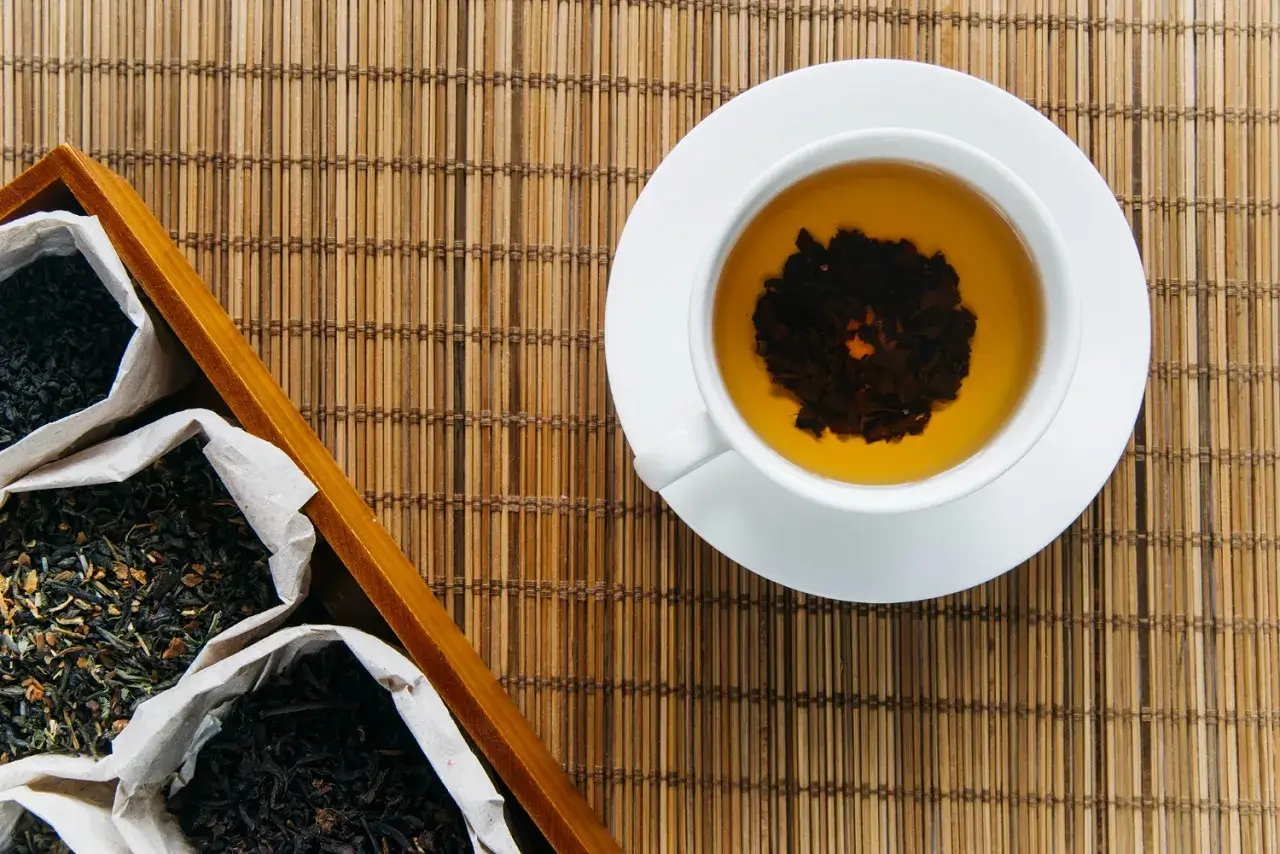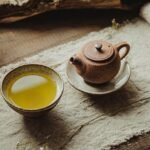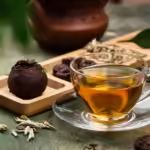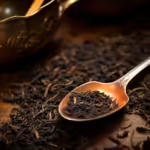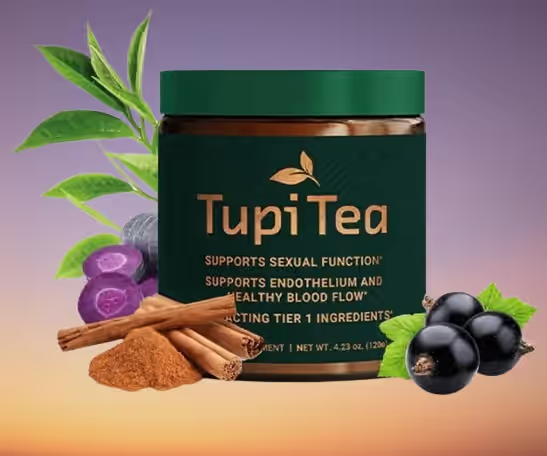Table of Contents
Introduction to Lapsang Souchong Tea
Lapsang Souchong tea is a distinctive type of black tea that stands out from other teas due to its bold, smoky flavor. Native to the Wuyi region of China’s Fujian province, this tea has a long history and is often referred to as smoked tea because of the unique drying process it undergoes. While many people associate tea with light, floral, or earthy flavors, Lapsang Souchong offers a completely different experience with its intense smokiness that some describe as similar to a campfire.
If you’re wondering, “Can you smoke tea?”, the answer is yes — and Lapsang Souchong is the perfect example of a tea that’s been traditionally smoked for centuries. Let’s dive into the fascinating world of Lapsang Souchong and uncover why this robust tea is a must-try for any tea lover.
The Unique Smoking Process of Lapsang Souchong Tea
Lapsang Souchong tea gets its smoky flavor through a traditional drying method that involves using pinewood fires. After the leaves are plucked and withered, they are laid on bamboo trays and dried over these fires. The smoke from the pinewood infuses the tea leaves, giving them the distinctive, powerful aroma and taste that Lapsang Souchong is known for.
Many tea drinkers often wonder, “Can you smoke tea?” The answer lies in the way Lapsang Souchong is prepared. While you may not be able to smoke any type of tea, the process used to produce this tea has been carefully honed over generations. The careful control of the smoking process ensures that the tea leaves absorb just the right amount of smokiness, without overpowering the natural flavors of the tea itself.
Historical Roots of Smoked Tea
The origin of Lapsang Souchong tea can be traced back to the Qing Dynasty. Legend has it that during a time of war, tea producers needed to dry their tea quickly to avoid spoilage. They used pine fires to expedite the drying process, inadvertently creating the smoked tea we now know as Lapsang Souchong. Since then, the method has been passed down and refined, becoming one of the hallmarks of Fujian’s tea culture.
The Bold Flavor Profile of Lapsang Souchong

The flavor profile of Lapsang Souchong tea is not for the faint-hearted. Its signature smoky flavor is complemented by subtle notes of pine, wood, and earth. Upon the first sip, you’re likely to be met with a bold smokiness that can be quite startling if you’re accustomed to lighter teas. However, once you allow your palate to adjust, you’ll begin to detect underlying layers of flavor that make this tea truly unique.
Smoked tea lovers describe Lapsang Souchong as being both robust and smooth, with a lingering aftertaste that leaves an impression long after you’ve finished your cup. It’s an ideal tea for cold winter mornings or as an evening drink when you want something with a strong, comforting character.
How to Brew Lapsang Souchong Tea for the Best Taste
Brewing Lapsang Souchong tea properly is essential for balancing its smoky and rich flavors. Follow these simple steps to get the best cup:
- Water Temperature: Heat your water to just below boiling (around 95°C or 203°F). Using water that’s too hot can make the tea taste bitter.
- Tea Quantity: Use about 1 teaspoon of Lapsang Souchong tea leaves per cup of water. If you prefer a stronger flavor, you can add more leaves, but be cautious as the smokiness can easily become overpowering.
- Steeping Time: Steep for 3-4 minutes. Longer steeping times will result in a bolder, smokier taste. If you’re new to this tea, start with a shorter steep time to get accustomed to its intensity.
- Optional Additions: Although traditionalists prefer to drink Lapsang Souchong plain, some people enjoy it with a splash of milk or a drop of honey to soften the smoky notes.
By following these guidelines, you’ll be able to enjoy a perfect cup of smoked tea that’s well-balanced and full of flavor.
Health Benefits of Lapsang Souchong Tea
Beyond its distinctive flavor, Lapsang Souchong tea also offers a range of health benefits. Like other black teas, it is rich in antioxidants, which can help protect the body from oxidative stress and reduce inflammation. Here are some of the key health benefits associated with Lapsang Souchong:
1. Rich in Antioxidants
Lapsang Souchong, like all black teas, is a good source of polyphenols, which are antioxidants that can help fight free radicals in the body. This may aid in reducing the risk of chronic diseases such as heart disease and cancer.
2. Promotes Heart Health
Studies have shown that drinking black tea regularly may help improve cholesterol levels and reduce the risk of heart disease. The flavonoids found in Lapsang Souchong may support cardiovascular health by improving blood vessel function and reducing blood pressure.
3. Aids in Digestion
The strong, smoky nature of Lapsang Souchong tea is believed to stimulate digestion, making it an excellent tea to enjoy after a heavy meal. The warming properties of the tea can soothe the stomach and help ease indigestion.
4. Supports Mental Alertness

Lapsang Souchong contains caffeine, which can help increase mental alertness and improve concentration. While it doesn’t contain as much caffeine as coffee, it still provides a gentle boost in energy without the jitters often associated with other caffeinated beverages.
5. Calming Effects
Interestingly, despite its caffeine content, Lapsang Souchong is also known for its calming properties. The warmth and aroma of the tea have a soothing effect that can help alleviate stress and anxiety.
Can You Smoke Other Types of Tea?
If you’ve become intrigued by Lapsang Souchong’s smoky profile, you might be wondering, “Can you smoke tea?” The answer is yes, but not all teas are suitable for smoking. While Lapsang Souchong is the most famous example of smoked tea, other black teas or even green teas can also be smoked, though they won’t yield the same rich and complex flavors.
To smoke tea, you would need to replicate the drying process over a fire, which can be a difficult technique to master without professional equipment. The type of wood used for smoking can also have a significant impact on the final flavor, with pine being the traditional choice for Lapsang Souchong.
For adventurous tea enthusiasts, experimenting with smoking different teas at home can be an exciting way to discover new flavors. However, for those who want to enjoy the best-smoked tea experience, it’s recommended to stick with authentic Lapsang Souchong from reputable tea producers in Fujian, China.
Conclusion
Lapsang Souchong tea is a truly unique and bold tea that offers a one-of-a-kind tasting experience. With its rich history, distinctive smoking process, and robust flavor profile, it’s no wonder this tea has become a favorite among tea connoisseurs worldwide. If you’re a fan of smoky flavors or simply looking to broaden your tea horizons, Lapsang Souchong is definitely worth a try. And if you’re curious, the question “Can you smoke tea?” has been answered through the fascinating tradition of this tea, proving that smoking can indeed enhance the depth and complexity of tea flavors.
Whether you’re enjoying it plain or with a touch of milk, Lapsang Souchong will captivate your senses and leave you with a memorable tea-drinking experience.
